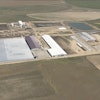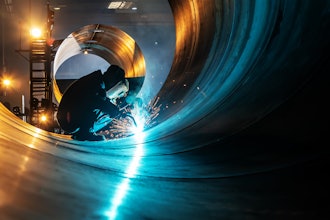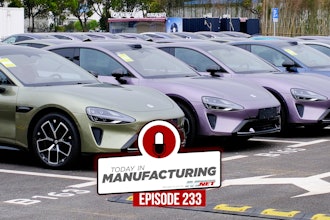Different conveyor belting options are available to manufacturers, and each presents its own benefits to various applications.
Virtually every food manufacturer employs conveying systems in their processing operations. Different conveyor belting options are available to manufacturers, and each presents its own benefits to various applications. Two experts to sound off: What are the benefits of different types of conveyor belting?
Kelly Hayden , Director, Market and Business Development, Cambridge International
There are significant benefits to using metal belts in food processing. Stainless steel resists scratches and nicks and does not absorb bacteria, making it impervious to biofilms. It is easy-to-clean, food-safe and eliminates virtually all sanitation concerns. This reduces water consumption and saves time in cleaning processes. If something does happen to a belt which compromises the product, metal is immediately detectable in food products, assuring food safety.
From the start of the product line till the finished goods go out the door, metal belts provide the most versatile variations for all processes including breading, frying, baking, freezing and even packaging. Countless specifications are available for a variety of metal belting types and conveyor configurations, both friction and positively-driven. The advanced alloys used in metal systems are wear-resistant which become work-hardened and resist fatigue. The positive-drive of a metal belt system also guarantees precise tolerances, ensuring true tracking.
Link-style and grid-style belts provide open belt spacing from five microns to several inches providing multiple functions, from full product support to exceptional air-flow and ventilation, for widths in excess of 20 feet. Metal belting is durable, providing exceptional strength to accommodate the heaviest of loads and even have the ability to free-span without supplemental support. This strength allows belts to achieve speeds of just inches per minute up to 1,000 feet per minute. Custom options such as pockets, cradles, retaining edges and flights for all processing demands are available on a metal belt, which is capable of handling excessively heavy loads, a benefit not necessarily applicable to other types of belts.
Metal belts are able to withstand a wide range of temperatures. From freezing to high-temperature baking lines, belt and machined tooth roll systems can accommodate for expansion and contraction in these extreme environments. Many types of belts cannot be used in high-temperature applications while steel is able to withstand even the highest heats. Flattened wire designs can eliminate stretching of the belt and reduce camber, stopping the belt from flexing in the center.
Metal belts are cost-effective because they boast a long service life. They are easy to clean and easy to splice and thus, service and maintenance are greatly reduced when using metal belts, while change-outs and replacements need to be done less often. From sanitation to longevity, metal belts can handle all food-processing and packaging demands from start to final product.
Mike Hosch, Director of Engineering, Dorner Manufacturing
Made of injection-molded polyethylene or acetyl plastic, plastic chain belt conveyors involve linking together rows of modules by hinge rods to form a continuous belt chain. Plastic sprockets around the conveyor’s spindle positively drive the conveyor. These spindles provide excellent tracking by preventing belt slippage during operation, especially in wet environments.
By its very nature, plastic chain belting gives users great flexibility in designing their conveyor systems. Plastic chain belting can easily make turns and flex to go up inclines or down declines. Such flexibility can help to save production space and reduce the number of product transfers, which can eliminate areas for product loss.
Another example of its flexibility is seen in custom-built conveyor systems. Plastic chain belting can be made to virtually any width or length, giving customers the ability to order a conveyor system to fit their exact application specifications. If a system calls for multiple conveyors, a smaller pitch plastic chain belt can be used to accommodate tight transfers of product from one conveyor to another. With these tight transfers users are able to reduce product loss at transfer.
Many food applications call for an open-mesh plastic chain belt for enhanced sanitation or for cooling or air flow. As implied by its name, open mesh allows for water and cleaning agents to drain off the belt; drainage isn’t as good on a standard belt conveyor, as water only wicks off the sides.
Plastic chain belts are resistant to water and most cleaning agents, which gives the customer the ability to wash down the conveyor. Their open mesh design allows for optimal drainage and minimal downtime. The plastic chain belts have easy-to-clean surfaces, and are extremely durable, offering resistance to cuts. If part of the plastic chain belt does get damaged, repairs can be quickly made by simply removing the hinge rod of the affected chain module and replacing it with a new section — the rest of the belt can remain in place on the conveyor.
Common food applications where plastic chain conveyor systems offer the greatest advantages are meat, poultry, snack food and confections, ready-to-eat foods, bakery and seafood.
Customers using plastic chain conveyor systems find that added flexibility and increased sanitation are two critical elements that make them an ideal fit in the food manufacturing industry. These features, along with many others, give plastic chain conveyors more production time and a higher return-on-investment.


















